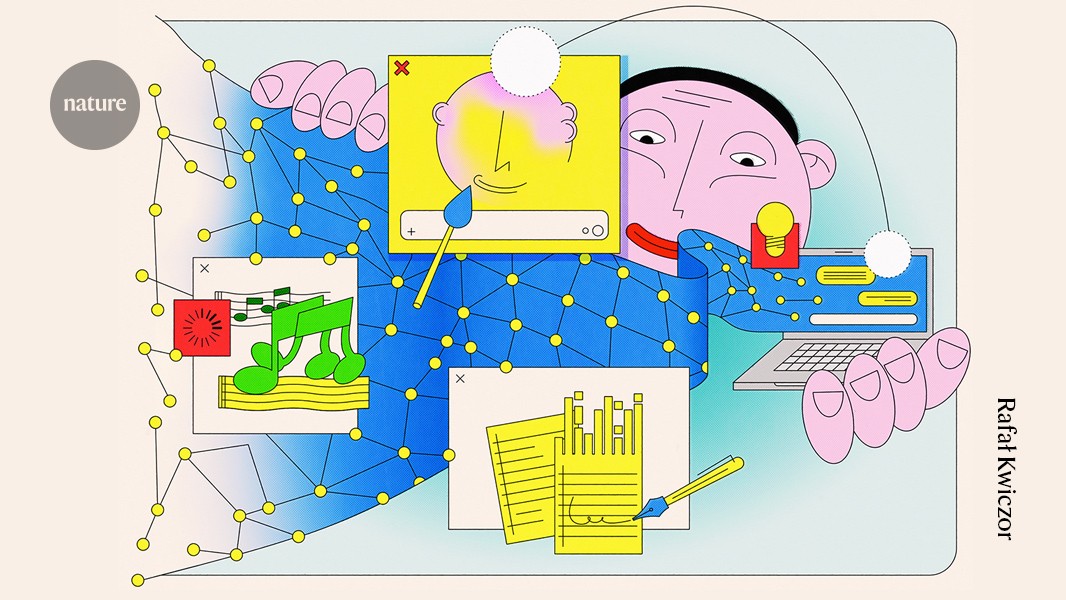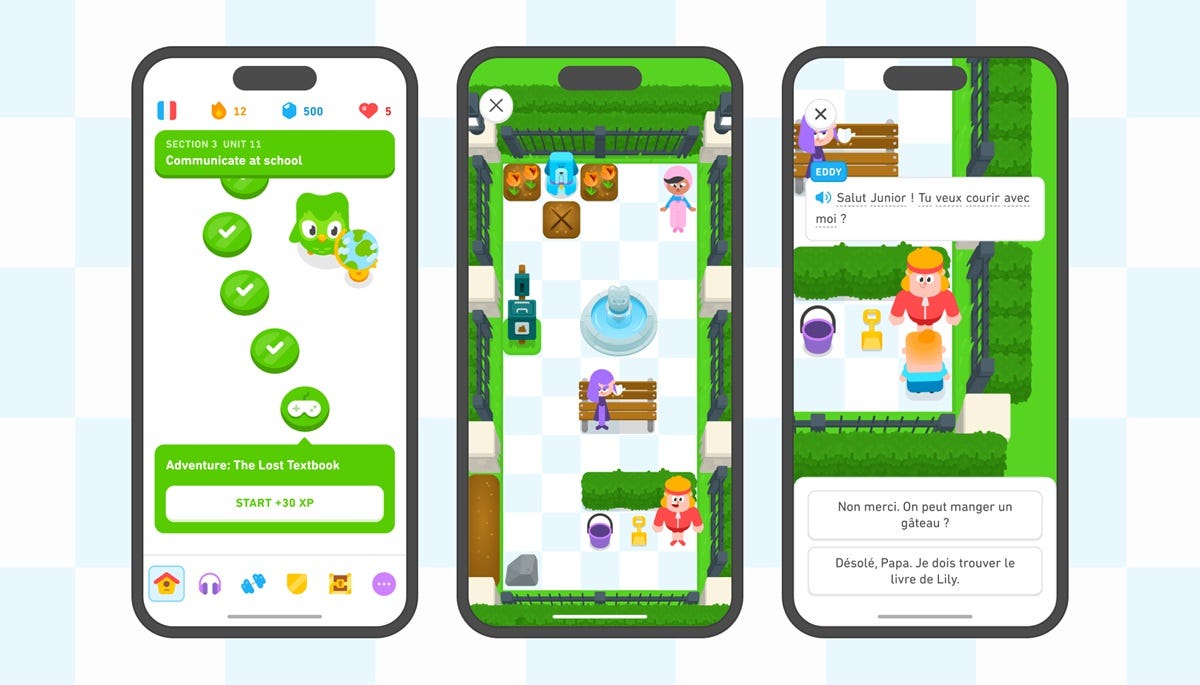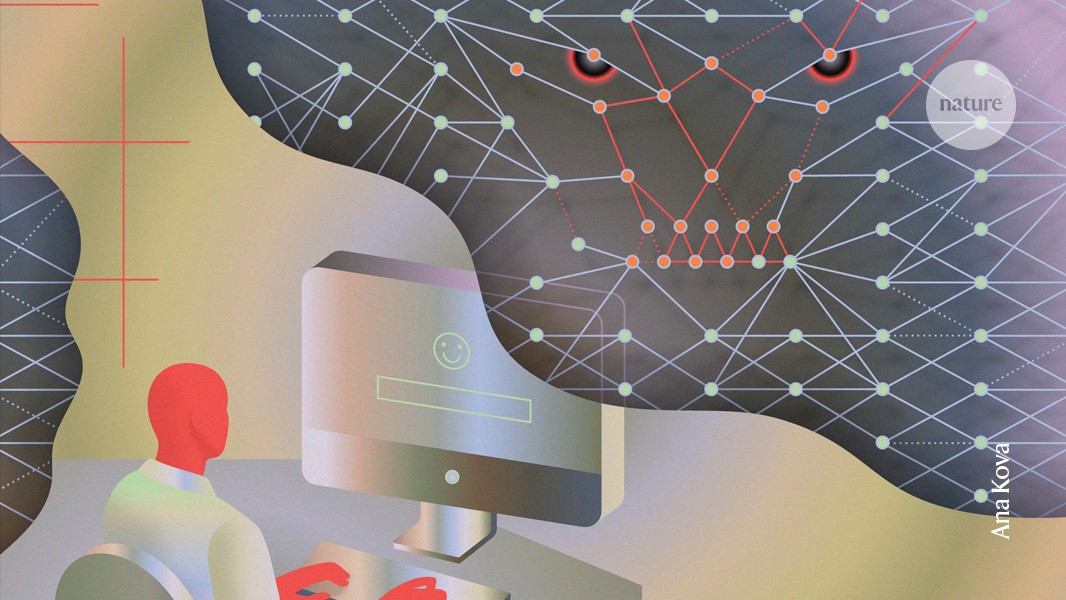#large-language-models
#large-language-models
[ follow ]
#generative-ai #ai-safety #seo #agentic-ai #robotics #learning-outcomes #ai-investment #ai-generated-content
fromThe Verge
1 day agoIs language the same as intelligence? The AI industry desperately needs it to be
Fundamentally, they are based on gathering an extraordinary amount of linguistic data (much of it codified on the internet), finding correlations between words (more accurately, sub-words called "tokens"), and then predicting what output should follow given a particular prompt as input. For all the alleged complexity of generative AI, at their core they really are models of language.
Artificial intelligence
Artificial intelligence
fromNature
3 days agoWhat is the future of intelligence? The answer could lie in the story of its evolution
Scaled next-token predictors evolved into large language models that can understand concepts, generate humor, write and debug code, and produce fluent, intelligent responses.
fromwww.theguardian.com
3 days agoCan't tech a joke: AI does not understand puns, study finds
Comedians who rely on clever wordplay and writers of witty headlines can rest a little easier, for the moment at least, research on AI suggests. Experts from universities in the UK and Italy have been investigating whether large language models (LLMs) understand puns and found them wanting. The team from Cardiff University, in south Wales, and Ca' Foscari University of Venice concluded that LLMs were able to spot the structure of a pun but did not really get the joke.
Artificial intelligence
Artificial intelligence
fromFast Company
6 days agoAI CEOs are promising all-powerful superintelligence. Government insiders have thoughts
AI promises breakthroughs in medicine, science, and human-level intelligence while governments lag adoption and critics warn of unreliability and threats to democratic values.
fromScatterarrow
1 week agoAll Your Coworkers Are Probabilistic Too
If you've worked in software long enough, you've probably lived through the situation where you write a ticket, or explain a feature in a meeting, and then a week later you look at the result and think: this is technically related to what I said, but it is not what I meant at all. Nobody considers that surprising when humans are involved. We shrug, we sigh, we clarify, we fix it.
fromBusiness Insider
1 week agoCohere CEO says AI will disrupt white collar jobs - and finance could be next
"You have to pay them a lot because there's not a lot of these people for the world," Gomez said. "And so there's tons of demand for these people, but there's not enough of those people to do the work the world needs. And it turns out that these models are best at the types of things those people do."
Artificial intelligence
Privacy professionals
fromdesignboom | architecture & design magazine
1 week agotrouble in toyland: how non-profit organization PIRG tests AI toys to protect children
Several AI-powered toys pose privacy and safety risks for children due to persistent listening, faulty connectivity, and voice-recording vulnerabilities.
fromArs Technica
2 weeks agoMeta's star AI scientist Yann LeCun plans to leave for own startup
LeCun founded Meta's Fundamental AI Research lab, known as FAIR, in 2013 and has served as the company's chief AI scientist ever since. He is one of three researchers who won the 2018 Turing Award for pioneering work on deep learning and convolutional neural networks. After leaving Meta, LeCun will remain a professor at New York University, where he has taught since 2003.
Artificial intelligence
fromTechCrunch
2 weeks ago6Sense founder Amanda Kahlow raises $30 million for new human-replacement AI sales startup 1Mind | TechCrunch
That's a crowded market where even her previous firm, 6Sense, offers agents. "I'm not playing in outbound," Kahlow tells TechCrunch. Mindy is intended to handle inbound sales, going all the way to "closing the deal," Kahlow says. This agent is used to augment self-service websites and, Kahlow says, to replace the sales engineer on calls for larger enterprise deals. It can also be the onboarding specialist, setting up new customers.
Startup companies
fromThe New Yorker
2 weeks agoIs A.I. Amazing or Are We Simple?
L.L.M.s are especially good at writing code, in part because code has more structure than prose, and because you can sometimes verify that code is correct. While the rest of the world was mostly just fooling around with A.I. (or swearing it off), I watched as some of the colleagues I most respect retooled their working lives around it. I got the feeling that if I didn't retool, too, I might fall behind.
Artificial intelligence
Venture
fromBusiness Insider
2 weeks agoI'm a serial founder who's launched 15 projects, including Digit. The secret is getting in the reps and not being afraid to fail.
Ethan Bloch began entrepreneurship at 13 with an early e-commerce store and now launched Hiro, his 15th project: a financial-planning platform leveraging large language models.
fromEthanmarcotte
2 months agoAgainst the protection of stocking frames. - ethanmarcotte.com
I think it's long past time I start discussing "artificial intelligence" ("AI") as a failed technology. Specifically, that large language models (LLMs) have repeatedly and consistently failed to demonstrate value to anyone other than their investors and shareholders. The technology is a failure, and I'd like to invite you to join me in treating it as such. I'm not the first one to land here,
Artificial intelligence
fromWIRED
1 month agoAI's Next Frontier? An Algorithm for Consciousness
As a journalist who covers AI, I hear from countless people who seem utterly convinced that ChatGPT, Claude, or some other chatbot has achieved "sentience." Or "consciousness." Or-my personal favorite-"a mind of its own." The Turing test was aced a while back, yes, but unlike rote intelligence, these things are not so easily pinned down. Large language models will claim to think for themselves, even describe inner torments or profess undying loves, but such statements don't imply interiority.
Artificial intelligence
fromPsychology Today
3 weeks agoAI and the New Rhythm of Thought
We collapse uncertainty into a line of meaning. A physician reads symptoms and decides. A parent interprets a child's silence. A writer deletes a hundred sentences to find one that feels true. The key point: Collapse is the work of judgment. It's costly and often can hurt. It means letting go of what could be and accepting the risk of being wrong.
Philosophy
fromTechCrunch
4 weeks agoMem0 raises $24M from YC, Peak XV and Basis Set to build the memory layer for AI apps | TechCrunch
The startup starts with the premise that large language models can't remember past interactions the way humans do. If two people are chatting and the connection drops, they can resume the conversation. AI models, by contrast, forget everything and start from scratch. Mem0 fixes that. Singh calls it a "memory passport," where your AI memory travels with you across apps and agents, just like email or logins do today.
Venture
Startup companies
fromTechCrunch
4 weeks agoCyDeploy wants to create a replica of a company's system to help it test updates before pushing them out - catch it at Disrupt 2025 | TechCrunch
CyDeploy uses machine learning to create digital twins of critical systems for pre-deployment testing, reducing risk and speeding patch rollout without impacting live environments.
fromNature
1 month agoDaily briefing: Surprise illnesses had a role in the demise of Napoleon's army
Previous research using DNA from soldiers' remains found evidence of infection with Rickettsia prowazekii, which causes typhus, and Bartonella quintana, which causes trench fever - two common illnesses of the time. In a fresh analysis, researchers found no trace of these pathogens. Instead, DNA from soldiers' teeth showed evidence of infection with Salmonella enterica and Borrelia recurrentis, pathogens that cause paratyphoid and relapsing fever, respectively.
Science
fromenglish.elpais.com
4 weeks agoAI crosses the boundary of privacy without humanity having managed to understand it
From virtual assistants capable of detecting sadness in voices to bots designed to simulate the warmth of a bond, artificial intelligence (AI) is crossing a more intimate frontier. The fervor surrounding AI is advancing on an increasingly dense bed of questions that no one has yet answered. And while it has the potential to reduce bureaucracy or predict diseases, large language models (LLMs) trained on data in multiple formats text, image, and speech
Artificial intelligence
fromHarvard Business Review
3 weeks agoDo You Have the Right Data Storage Infrastructure to Support Your AI Strategy? - SPONSOR CONTENT FROM SOLIDIGM
Organizations have long adopted cloud and on-premises infrastructure to build the primary data centers-notorious for their massive energy consumption and large physical footprints-that fuel AI's large language models (LLMs). Today these data centers are making edge data processing an increasingly attractive resource for fueling LLMs, moving compute and AI inference closer to the raw data their customers, partners, and devices generate.
Artificial intelligence
fromTechCrunch
1 month agoWhy Cohere's ex-AI research lead is betting against the scaling race | TechCrunch
AI labs are racing to build data centers as large as Manhattan, each costing billions of dollars and consuming as much energy as a small city. The effort is driven by a deep belief in "scaling" - the idea that adding more computing power to existing AI training methods will eventually yield superintelligent systems capable of performing all kinds of tasks.
Artificial intelligence
Artificial intelligence
fromFortune
1 month agoJust like humans, AI can get 'brain rot' from low-quality text and the effects appear to linger, pre-print study says | Fortune
Continuous consumption of short, viral online content causes cognitive decline in humans and AI, degrading attention, reasoning, and social behavior.
fromWIRED
1 month agoAI Models Get Brain Rot, Too
AI models may be a bit like humans, after all. A new study from the University of Texas at Austin, Texas A&M, and Purdue University shows that large language models fed a diet of popular but low-quality social media content experience a kind of "brain rot" that may be familiar to anyone who has spent too long doomscrolling on X or TikTok.
Artificial intelligence
Startup companies
fromTechCrunch
1 month agoSumble emerges from stealth with $38.5M to bring AI-powered context to sales intelligence | TechCrunch
Sumble aggregates web signals into an LLM-backed knowledge graph to deliver contextual technographic and organizational insights that help sales teams identify contacts and opportunities.
fromThe Verge
1 month agoAI can't even turn on the lights
Large language models are currently everyone's solution to everything. The technology's versatility is part of its appeal: the use cases for generative AI seem both huge and endless. But then you use the stuff, and not enough of it works very well. And you wonder what we're really accomplishing here. On this episode of The Vergecast, Nilay rejoins the show full of thoughts about the current state of AI - particularly after spending a summer trying to get his smart home to work.
Artificial intelligence
fromApp Developer Magazine
11 months agoSMU researchers show AI creates realistic game characters
Klinkert embraced the idea and pursued it academically, ultimately earning a Master of Interactive Technology in Digital Game Development from SMU Guildhall. His early passion for interactive media has since evolved into a cutting-edge research focus. Now a PhD student in the Computer Science Department at SMU's Lyle School of Engineering, Klinkert is exploring how large language models (LLMs), such as ChatGPT, can be used to create non-playable characters (NPCs) that act and respond more like real people, with consistent personalities and believable emotional responses.
Artificial intelligence
fromFast Company
1 month agoAre large language models the problem, not the solution?
There is an all-out global race for AI dominance. The largest and most powerful companies in the world are investing billions in unprecedented computing power. The most powerful countries are dedicating vast energy resources to assist them. And the race is centered on one idea: transformer-based architecture with large language models are the key to winning the AI race. What if they are wrong?
Philosophy
fromPsychology Today
1 month agoThe Coherence Trap: How AI Is Teaching Us to Feel Truth
It's fair to say that belief is rarely rational. We organize information into patterns that "feel" internally stable. Emotional coherence may be best explained as the "quiet logic" that makes a story satisfying, somewhat like a leader being convincing or a conspiracy being oddly reassuring. And here's what's so powerful-It's not about accuracy, it's the psychological comfort or even that "gut" feeling. When the pieces fit, the mind relaxes into complacency (or perhaps coherence).
Artificial intelligence
fromFuturism
1 month agoChatGPT Is Giving Men Such Bad Advice on Dating That It May Actually Be Trying to Keep Them Single
It's a phenomenon tied to the prevalence of text-based apps in dating. Recent surveys show that one in fiveadults under 30 met their partner on a dating app like Tinder or Hinge, and more than half are using dating apps. For years, app-based dating has been regarded as a profoundly alienating experience, a paradigm shift which coincides with a rapid rise in social isolation and loneliness.
Artificial intelligence
fromMarTech
1 month agoAI KPIs: Turning mentions Into strategy in the age of LLMs | MarTech
Large Language Models (LLMs) like ChatGPT, Claude, Gemini and Perplexity are rapidly becoming the first place decision-makers go for answers. These systems don't return a page of links; they generate a synthesized response. Whether your brand is included, or ignored, in that answer increasingly determines your relevance in the buying journey. This changes the marketer's playbook. Visibility is no longer only about ranking on Google. It's about whether you're present in AI-generated responses, how you're framed,
Marketing tech
fromFuturism
1 month agoMan Embraces AI at Work, Gets Rewarded by Boss Replacing Him With It
His reward for going along with those demands, after being a faithful servant for 17 years at the edutech company? Getting replaced by a large language model, along with a couple dozen of his coworkers. That's, of course, after his boss reassured him that he wouldn't be replaced with AI. Deepening the bitter irony, Cantera - a researcher and historian - had actually grown pretty fond of the AI help, telling WaPo that it "was an incredible tool for me as a writer."
Artificial intelligence
[ Load more ]
























